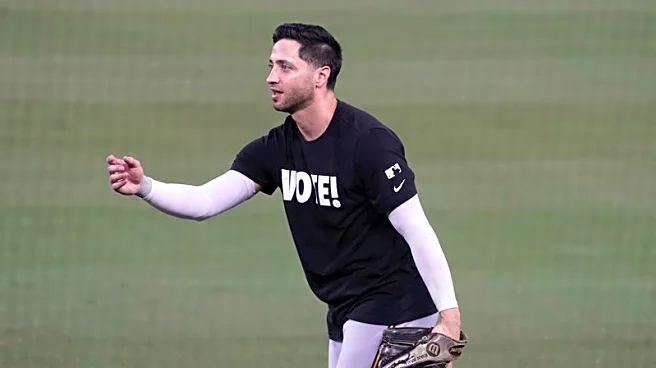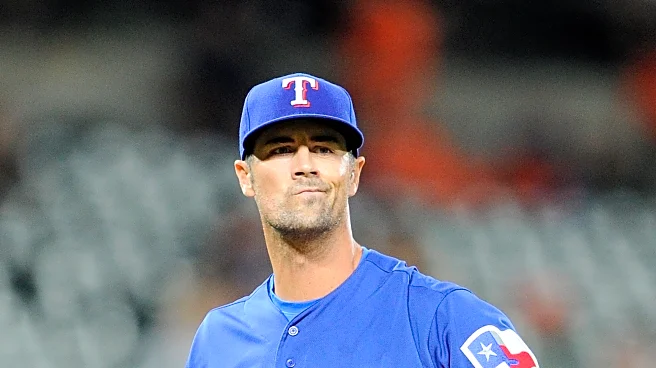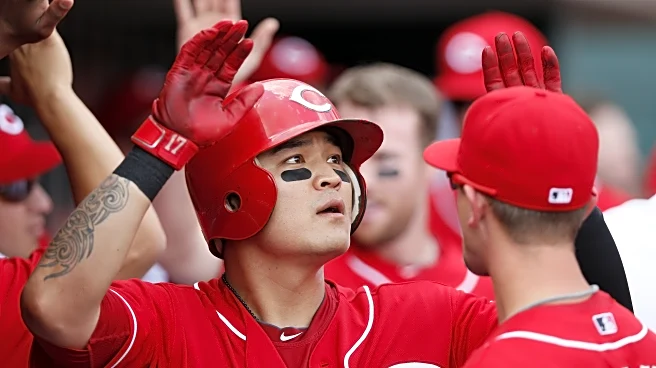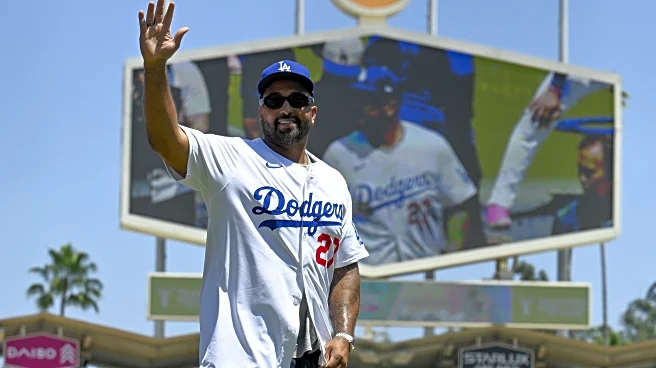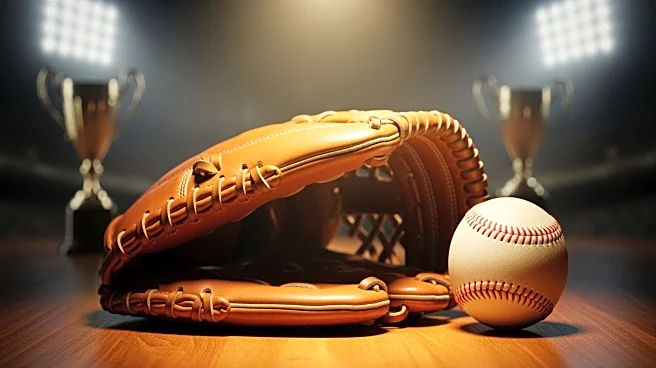Today, ballots were mailed out to the voting members of the Baseball Writers of Association of America, the group that elects players to the Hall of Fame. We’re going to take a quick look through the new
and returning players on the ballot, with special attention paid to those who have ties to Milwaukee. This article’s accompanying photo may have clued you in: there is one big name with relevance to Brewers fans. As a reminder, players must receive 75% of the vote in order to make the Hall of Fame, and if they do not receive 5% or they fail to get elected after ten attempts, they are removed from the subsequent year’s ballot.
First-Year Players
For the purposes of our website, the big news here is the first-ballot appearance of Ryan Braun, who could be considered the second-best player in franchise history (though Paul Molitor would certainly like a word). Before we get to the other thing, Braun isn’t a perfect Hall of Fame candidate: he played only 14 seasons and fewer than 1800 games, so his career numbers are good but not at the typical Hall of Fame standard (1,963 hits, 352 home runs, 216 stolen bases). Braun’s 134 OPS+ is fantastic, and better than some other Hall of Fame left fielders, even major ones like Carl Yastrzemski, Rickey Henderson (who obviously did other things), and Al Simmons. But Braun didn’t offer much defensively (though he was probably a bit better of an outfielder than given credit for), and he didn’t play long enough to accrue those big-time numbers.
Then there’s the other thing. Braun was roiled in the Biogenesis scandal of 2013, after he had tested positive for a performance-enhancing drug in 2011 and successfully appealed that case on a technicality. All of this heavily tainted Braun’s 2011 MVP win (and runner-up finish in 2012) and ended up costing him over half of the 2013 season due to suspension. He wasn’t the same after coming back, and while Braun has done an admirable job of rehabilitating his image locally, he is still thought of as just another PED user nationally. Voters probably wouldn’t have given him much support if he’d been clean, but with the PED stuff, I’d be surprised if he gets more than a token vote or two.
There’s one other player here with small ties to the Brewers: Gio González was briefly a star pitcher in Oakland and Washington in the early 2010s (and again in 2017) before arriving in Milwaukee as a 32-year-old veteran at the 2018 waiver trade deadline. González pitched well in five September starts for the Brewers after the trade and started twice (effectively as an opener) in the NLCS that year (he allowed two runs in three innings). González returned to Milwaukee in 2019 and pitched well in limited duty (19 appearances, 17 starts, 87 1/3 innings) but struggled with injuries. He made his last appearances for the White Sox in 2020 before retiring, and finished his career with 131 wins and a 3.70 ERA (111 ERA+).
We’ll go quickly through the other first-timers, spending a bit more time first with the one player I think actually deserves some consideration from this (relatively underwhelming) group.
That player is pitcher Cole Hamels, who came up as a 22-year-old phenom with the Phillies in 2006, finished sixth in Cy Young voting in 2007, and then tore through the playoffs in 2008—including a stellar start of eight innings, two hits, one walk, no runs, and nine strikeouts against your Milwaukee Brewers. Hamels was named the MVP of the NLCS and the World Series as the Phillies triumphed in ’08, which some people forget was before the team went out and added Cliff Lee, Roy Halladay, and Roy Oswalt to their absurd 2009 and 2010 rotations.
But one postseason run doesn’t make a Hall of Famer. Hamels continued pitching for the Phillies until 2015, when he was traded to the Rangers, and pitched for them for a few years before finishing his career with a couple seasons in Chicago (before making one final appearance for the Braves in 2020). In all that time, Hamels was essentially never bad. From 2006-2019 (which makes up his entire career save that one Braves outing), Hamels had only two seasons with an ERA+ below 110 (104 in 2013 and 97 in 2009). He earned at least 1.9 WAR in every one of those seasons, and had at least 3.0 in 11 of those 14 years. He finished his career with 59 bWAR (though FanGraphs is less rosy at 51.6) and an ERA+ of 123, which is excellent—that’s the same as no-doubt Hall of Famers Juan Marichal and Mike Mussina, and better than legends like Bob Feller, Warren Spahn, and Don Drysdale.
Yes, Hamels lacks some volume and he never finished higher than fifth in Cy Young voting, but between his otherworldly regular season consistency and his legend run in the 2008 postseason, he has a real case, which can’t really be said for anyone else on this list of first-year players.
The rest of the players on the ballot for the first (and certainly only) time:
- Shin-Soo Choo picked up over 1,500 hits and had a career OPS+ of 122. He was an extremely solid hitter, but he was a DH who didn’t do much else.
- Edwin Encarnación hit 424 career homers, but offered little else as a player beyond being a very good power hitter.
- Alex Gordon was a staple of the good Royals teams of the 2010s, after being named the game’s top overall prospect (according to Baseball Prospectus) before the 2007 season. While superstar status eluded Gordon, he became one of the great defensive left fielders in league history (eight Gold Gloves, two Platinum Gloves) and did have three seasons worth over six WAR. He won the World Series with the Royals in 2015.
- Matt Kemp is most relevant to Brewers fans for just losing the 2011 MVP to Braun. (In retrospect, Kemp maybe deserved it: he led the NL in runs scored, homers, RBI, OPS+, total bases, and WAR.) Kemp never came remotely close to the season he had in 2011, and while he has that one fantastic season to his name, he finished his career with just 21.6 WAR.
- Howie Kendrick was a consistently good second baseman mostly for the Angels. He wasn’t a star (one All-Star Game), but he was reliable for a good offensive season with defense that would do just fine. In 2019, at age 35, Kendrick was the veteran leader of a surprising Nationals World Series winner, and he picked up NLCS MVP honors before hitting .280 with a game-seven homer in the World Series.
- For a time, it looked like Nick Markakis might’ve been on track to become league history’s least likely member of the 3,000 hit club. Alas, injuries derailed him as he reached his mid-30s, but from his rookie season in 2006 through his age-34 season in 2018, Markakis averaged 172 hits per season and had 2,237 for his career. Unfortunately he only played 153 more games after that, and finished with 33.7 WAR, 2,388 hits, and 514 doubles.
- Daniel Murphy briefly became a star when he led the NL in doubles, slugging, and OPS in 2016. But he had only two seasons of 3+ WAR in his 12-year career, finishing with just over 1,500 hits and a 113 OPS+.
- Hunter Pence finished third in Rookie of the Year voting behind Braun and Troy Tulowitzki in 2007 before embarking on a career in which he felt like a solid veteran bat even when he was in his mid-20s. Pence was just a solid hitter, and while durability issues affected him in his 30s, he was just the epitome of a professional baseball player. He finished with 1,791 hits, 30.9 WAR, and 244 homers.
- Rick Porcello won an unlikely Cy Young award with Boston in 2016 when he led the league in wins (22) and K:BB ratio (5.91) while pitching to a 3.15 ERA (142 ERA+). The following season, he went 11-17 with a 4.65 ERA and had -0.4 bWAR. That sort of sums up Porcello’s career: he pitched 12 years, and had a couple bright moments, but never found a lot of consistency.
Returning Players
There is one player returning to the Hall of Fame ballot who played for the Brewers: Francisco Rodríguez, the longtime Angels closer who had two separate stints in Milwaukee. He was first acquired at the 2011 trade deadline and finished the season as the shutdown set-up man for closer John Axord, and he re-signed in Milwaukee as a free agent after the season. But Rodríguez struggled in 2012—it was his first bad season as a professional—before having a bounceback season in 2013 after signing another one-year deal in Milwaukee, when he started the season with a 1.09 ERA and 10 saves in 24 2/3 innings before the Brewers shipped him to Baltimore about a week before the trade deadline.
The Brewers and Rodríguez couldn’t quit each other, though, and after finishing the year in Baltimore, he again signed back with the Brewers in 2014 and 2015—the third and fourth free-agent deals that Rodríguez signed with Milwaukee. Rodríguez made back-to-back All-Star Games in 2014 and 2015, and saved 44 and 38 games in those two seasons. After the 2015 season, Rodríguez—who’d signed a two-year contract before the year started—was traded to Detroit in the deal that brought catcher Manny Piña to Milwaukee.
In all, Rodríguez pitched 250 2/3 innings across parts of five seasons as a Brewer, and saved 95 games while pitching to a 2.91 ERA (136 ERA+) and 3.54 FIP. For his whole career, Rodríguez built a resume that includes 437 saves—sixth on the all-time list, fourth at the time of his retirement—and a 2.86 career ERA (148 ERA+), a good enough resumé to put him somewhere in the top 10-to-12 relievers in the history of the game. It does not seem like that will be enough to get him into the Hall, as Rodríguez received 10.2% of the vote last year in his third attempt. Some ugly off-the-field issues don’t help Rodríguez’s case, including an incident when he was charged with domestic violence (a case that was later dropped when witnesses left the country) while a member of the Brewers in 2012.
A quick run through the rest of the returning players, with last year’s vote percentage and which ballot they’re on in 2026:
Bobby Abreu, 19.5%, seventh ballot. For those who weren’t paying particularly close attention, they might be shocked by the numbers that Abreu put up while playing from 1996-2014. His best years came on a bad Philadelphia team, where he was a potent power-speed combination: Abreu hit 574 doubles, 288 homers, and stole 400 bases at a rate better than 75% for his career. The only other players in baseball history to hit those marks? Barry Bonds and Craig Biggio. Abreu also walked a ton, a 14.6% walk rate for his career, and when you combine his 1,476 career walks with his 2,470 hits (and 33 HBP), he is in the top 50 all time in times on base.
Carlos Beltrán, 70.3%, fourth ballot. Beltrán has the numbers of a first-ballot Hall of Famer: 70 WAR, 2,725 hits, 435 homers, and 312 stolen bases at a sparkling 86.4% success rate, the best ever for someone with over 200 attempts. But Beltrán’s central role in the Astros’ sign-stealing scandal of 2017 cost him not only his managerial gig with the Mets but any chance at being a first-ballot Hall of Famer; he got only 46.5% on his first attempt. Voters are coming around though, and it seems likely that Beltrán—who has had double-digit gains in each of the last two years—will get elected this time around.
Mark Buehrle, 11.4%, sixth ballot. A throwback player, an old-school workhorse, Buehrle threw at least 200 innings in 14 straight years from 2001-2014, and then threw 198 in his final season in 2015. Buehrle wasn’t exactly a superstar—he made five All-Star games and got Cy Young votes only once, a fifth-place finish in the White Sox’ championship season in 2005—but he was the most remarkably durable and consistent pitcher in 21st-century baseball. He finished his career with 214 wins and an ERA+ of 117, which is better than the career marks for, among others, Hall of Famers CC Sabathia, Fergie Jenkins, Steve Carlton, Phil Niekro, and Jim Bunning.
Félix Hernández, 20.6%, second ballot. 20 percent on a first ballot is an important benchmark, and a solid harbinger of future success. On the surface, King Félix seems short of Hall of Fame quality: he has less than 50 career bWAR (54 on FanGraphs, still borderline), won only 169 games in his career, did not reach 3,000 strikeouts (2,524), and his career ERA+ of 117 is the same as Buehrle, listed above. But Félix’s support comes from the impression that for several years he was one of the very best pitchers in the league, which Buehrle cannot claim; Hernández won the Cy Young in 2010 and finished as the runner-up in 2009 and 2014, and won ERA titles in 2010 and 2014 and led the league in FIP in 2012.
Torii Hunter, 5.1%, sixth ballot. Hunter has been living a precarious existence on the Hall of Fame ballot, having never reached double digits in five appearances and just barely sneaking over the 5% line last year. Hunter has solid counting numbers (2,452 hits, 353 homers) and had a reputation as his era’s best defensive center fielder (nine Gold Gloves). But advanced metrics don’t like Hunter’s defense nearly as much as the eye test did, and his questionable plate discipline has also done him no favors with the analytics crowd—Hunter never earned more than 5.4 bWAR in a season and has only 50.6 for his career, a number that falls quite short of the Hall of Fame standard for outfielders.
Andruw Jones, 66.2%, ninth ballot. Jones, who is viewed by value statistics as possibly the greatest center fielder of all time, has a decent chance at making the nine-point leap necessary to gain induction this year. He has gained 25% in the past four ballots, and while he gained only five percent last season, a ballot light on good first-year candidates and the fact that he’s approaching the end of his eligibility (two more, if he needs them) could create a favorable environment. Jones, in addition to his legendary defense, was an excellent power hitter who hit 434 career homers and led the league with 51 in 2005.
Dustin Pedroia, 11.9%, second ballot. Injuries probably cost Pedroia any real chance at making the Hall, as he played in just over 1,500 games in his career. But for a time he looked destined for 3,000 hits, and he was a well-rounded player who won an MVP in 2008 and could’ve won another in 2011. Given the value of his peak, Pedroia’s numbers compare quite favorably with a whole bunch of Hall of Fame second basemen from the first half of the 20th century; for instance, I’d take Pedroia’s career over those of Bobby Doerr, Billy Herman, Tony Lazzeri, or Johnny Evers, all enshrined.
Andy Pettitte, 27.9%, eighth ballot. Without steroid issues, Pettitte’s case is borderline. He earned 60.2 bWAR and 68.2 fWAR, which are numbers that get you into the conversation, but Pettitte’s peak wasn’t all that impressive. He won a ton of games because he played for such good teams, but there were only a couple of seasons in Pettitte’s career when I would’ve thought of him as anywhere close to the best pitcher in the league. (He did finish second in Cy Young voting in 1996, but he’d have been nowhere close to that in modern times, as that result was based on his league-leading 21 wins.) The issues with performance-enhancing drugs would, you’d think, eliminate Pettitte from contention, but he did get a meaningful tick up last season, picking up 10% more of the vote than he’d had in any previous appearance on the ballot.
Manny Ramírez, 34.3%, tenth ballot. Speaking of PEDs, we’ve reached that section of the exercise. Ramírez is one of the most talented hitters in baseball history, without much doubt; his 154 OPS+ is tied for 25th all time among retired players in AL/NL history, and he hit 555 career homers. But Ramírez was also suspended for PEDs twice, in an era when players knew full well that they would be tested regularly. That’s tough.
Alex Rodríguez, 37.1%, fifth ballot. Continuing this discussion, Rodríguez also served a full-season suspension for steroids (and for lying about them), which undoes the fact that he is certainly one of the most talented baseball players to ever live. Rodríguez hit nearly 700 homers, eclipsed the 3,000 hit plateau, won three MVPs, and won two Gold Gloves at shortstop. But he was tied up in the same Biogenesis scandal that affected Braun, and, like Barry Bonds and Roger Clemens before him, Rodríguez will have to exist as one of the greatest players of all time to not get into the Hall of Fame.
Jimmy Rollins, 18%, fifth ballot. A popular figure who won an MVP in 2007, Jimmy Rollins has gained a little bit of momentum in voting in four years on the ballot but is still a long way from actual enshrinement. Rollins was a good defensive shortstop (four Gold Gloves) and an outstanding baserunner (470 steals) and hit an immense number of triples for a modern player (115, led the league four times), but like some others on this list, the way we look at modern stats has hurt his case a bit. Rollins played most of his career in the hitter-friendly Citizens Bank Ballpark, he spent his early years in a peak offensive era, and there were some holes in his offensive game, and thus his career OPS+ sits at just 95 and his career bWAR at 47.9. Seems tailor-made as a “Hall of Very Good” type.
Chase Utley, 39.8%, third ballot. Rollins’ teammate in Philadelphia, Utley has gone in the opposite direction with the help of analytics. Viewed as a fine player during his time who had a run of five straight top-15 MVP finishes, advanced stats that shine a light on Utley’s underrated defensive prowess now suggest that Utley’s run from 2005-2009 was the best five-year stretch for a second baseman since Joe Morgan’s run with the Big Red Machine in the 1970s. In those five years, Utley earned 7.3, 7.3, 7.8, 9.0, and 8.2 bWAR, a true Hall-of-Fame level peak. Not everyone believes in those numbers though, and they still trust what their eyes told them about his defense: that he was fine, but nothing special. Utley jumped 11% after his first year on the ballot, and could see another big gain this year that would likely position him for future enshrinement. Utley’s case is sort of a classic “do you believe analytics or not” case—those skeptical say he’s not at all deserving, and those who believe in analytics (who aren’t super-strict small-Hall types) think he’s a pretty easy Hall of Famer.
Omar Vizquel, 17.8%, ninth ballot. Vizquel, a defensive whiz who stuck around long enough to pick up 2,877 hits and over 400 stolen bases, Looked to be on a Hall of Fame path after he picked up 52.6% of the vote in his third year on the ballot in 2020. But later that year, nasty domestic abuse allegations against Vizquel emerged, and Vizquel’s vote total dropped to around 20%, where it stays. From a pure baseball perspective, justifying Vizquel is difficult: he was an excellent defender, but he wasn’t Ozzie Smith, and the light-hitting Wizard actual had five points of OPS+ on Vizquel, who finished his career with at 82 in that department.
David Wright, 8.1%, third ballot. Like Pedroia, Wright’s career was probably cut too short. But he was an excellent player; I might’ve given him the 2007 MVP, in retrospect, and he was a guy who did a bit of everything (power, speed, solid average, good defense early in his career). It’s a difficult case to make, but I do think you can make a legitimate Hall of Fame case for Wright as a guy who had a HOF peak but played only 323 games after turning 30.




